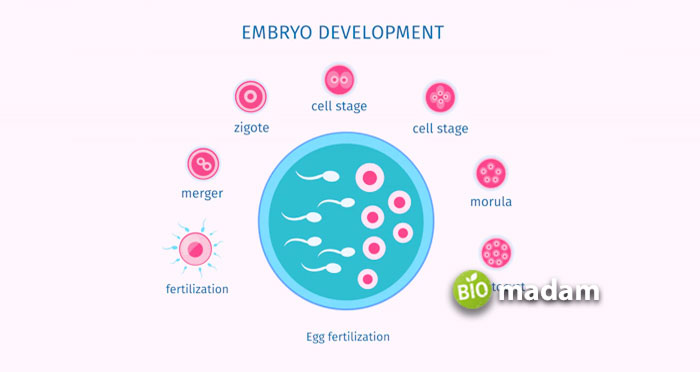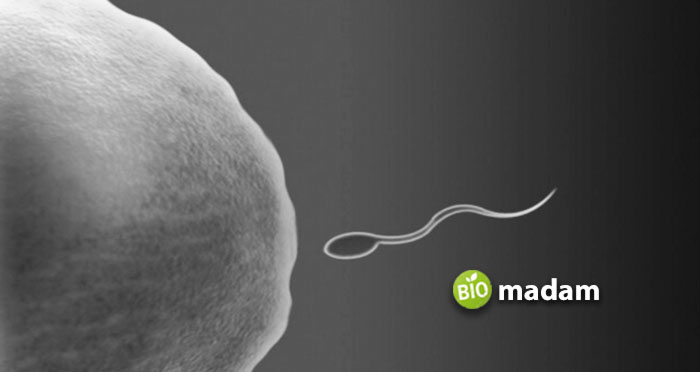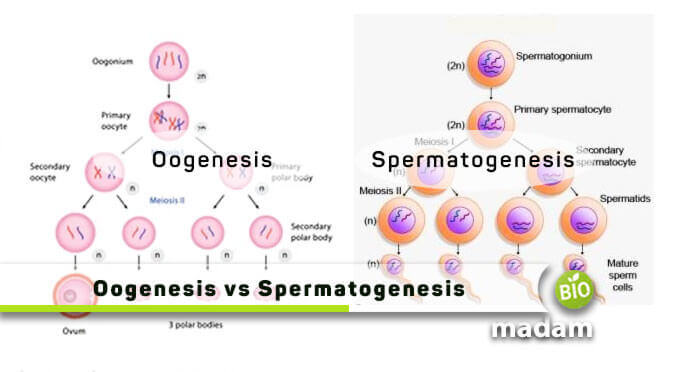Recently updated on March 5th, 2024 at 11:59 am
Every human body was first a single zygote formed, a cell produced through sperm and an egg. The cycle where male and female germs are produced is called Gametogenesis. These sperms and eggs are the males’ and females’ reproductive cells, also responsible for fertilization. After fertilization, the zygote grows, disintegrates, and develops into different tissues such as epithelial and connective tissue, and further organs, transforming into an entire human. The sustenance of any animal depends on its reproductive ability.
So, it all relies on the process and whether the newborn would be a male or a female. Hence, it’s essential to understand the primary cells, sperms, and eggs. That is why we presented this article to differentiate between Oogenesis and Spermatogenesis.

Gametogenesis for sperm formation is known as Spermatogenesis. On the contrary, the process for egg (ova) formation is called Oogenesis. Oogenesis is the process by which female (ova) gametes are formed. The meiosis process in female gametes is distinct from that of males, comprising four haploid gametes from a single diploid cell.
In Spermatogenesis, spermatozoa develop in the seminiferous tubules of the testis from germ cells. In addition, it is a complex process involving the division of mitotic cells and starts at puberty to continue for the rest of a male’s life. Both gametes are haploid cells that carry 23 unpaired chromosomes, half the human genetic makeup.
Comparison Table
| Basis of Comparison | Oogenesis | Spermatogenesis |
|---|---|---|
| Description | Formation of female eggs | Sperm formation (masculine gametes) |
| Origin | Develops from the germinal epithelium | Emerges from seminiferous tubules |
| No. of Gametes Produced | A single egg | Four sperms |
| Food Reserve | Plenty of food | Little food amount |
| Division Product | One oogonium alone produces oocytes. | All spermatogonia break up to form spermatozoa. |
| Cell Differentiation | Not present. | Present |
| Nucleus | In uncondensed form | Undergoes condensation. |
| Meiosis-II Products | One ovum and one polar body | Two spermatids |
| Reproduction | Ootids engage in the reproduction cycle | The spermatids convert to sperm to held reproduction. |
| Size | Eggs are greater in size than oocytes | Sperm is smaller than spermatozoa |
What is Oogenesis
Oogenesis is the formation of female embryos. This process occurs within the ovary in females, where the oogonium develops from the germinal epithelium surrounding the ovary. Furthermore, this cycle is pretty discontinuous and takes a duration of a few days to even years. Oogenesis has two divisions of maturation, with the first one completed in the ovaries, while the second takes place outside the cell after fertilization.

When an oogonium develops from the germinal layer, it undergoes mitosis and cytokinesis to transform into a primary oocyte (2n). This oogonium has a self-renewing capacity too. The primary oocyte takes Meiosis-I into account and differentiates into the secondary oocyte and one polar body (n). If the female did not reach puberty, the process would stick to the diplotene stage till the woman reaches puberty to release eggs. In other words, the secondary oocytes involve Meiosis-II to reach the metaphase and finally form ootids. Eventually, the formed ootid continues fertilization to produce a large, non-motile ovum that engages a sperm to produce a zygote. It also produces a second polar body.
Besides, unlike the male gametes that continuously produce from puberty onwards, female gametes start producing before birth but mature when the woman hits puberty.
Stages of Oogenesis
Oogenesis is the process of formation and maturation of female gametes, known as ova or egg cells. It occurs in the ovaries and involves several distinct stages:
- Primordial Germ Cell Stage: During embryonic development, primordial germ cells migrate to the gonadal ridge and become oogonia, which are the precursors of ova.
- Multiplication Stage: The oogonia undergo several mitotic divisions to produce primary oocytes.
- Growth Stage: The primary oocytes increase in size and accumulate nutrients in preparation for the next stage.
- Meiotic Prophase I: The primary oocyte initiates the first meiotic division but arrests at the diplotene stage of prophase I, a state known as the dictyate or resting stage.
- Maturation Stage: After puberty, in response to hormonal signals during each menstrual cycle, one primary oocyte resumes meiosis I and completes it, forming a secondary oocyte and a polar body.
- Ovulation: The secondary oocyte undergoes meiosis II, but this division is arrested at metaphase II until fertilization occurs.
- Fertilization: Upon fertilization by a sperm cell, the secondary oocyte completes meiosis II, extruding a second polar body and forming a mature ovum (haploid egg cell) and a second polar body.
It’s important to note that in humans, only one oocyte typically completes maturation and ovulation during each menstrual cycle, while the remaining primary oocytes degenerate.
What is Spermatogenesis
On the other hand, spermatogenesis is simply the formation of sperms. This process takes place inside the male testis. The germinal epithelial lining of a seminiferous tubule produces a spermatogonium. It’s again a diploid stem cell, having the potential to renew itself. Besides, the process continues and finishes in around 74 days. When this spermatogonium undergoes mitosis, it turns to the primary spermatocytes through a distinct process called spermatocytogenesis. These primary cells are responsible for producing two secondary spermatocytes through Meiosis-I. The formed secondary cells further undergo Meiosis-II to produce spermatids, connecting through the lumen.
Spermatids are non-flagellated, round cells that cannot take part in fertilization. Hence, they continue to mature from the haploid and motile spermatozoa/sperms. This process is also termed Spermiogenesis. Moreover, the sperms are condensed, thread-like structures whose growth period is relatively shorter.
Stages of Spermatogenesis
Spermatogenesis is the process of formation and maturation of male gametes, known as spermatozoa or sperm cells. It occurs in the seminiferous tubules of the testes and involves several distinct stages:
- Spermatogonial Stage: Spermatogonial stem cells, located in the seminiferous tubules, undergo mitotic divisions to produce primary spermatocytes.
- Meiotic Prophase I: The primary spermatocytes initiate the first meiotic division and progress through the stages of prophase I, including leptotene, zygotene, pachytene, diplotene, and diakinesis.
- Meiosis I: During meiosis I, the primary spermatocytes divide into two haploid secondary spermatocytes, each containing half the number of chromosomes.
- Meiosis II: The secondary spermatocytes immediately undergo meiosis II, dividing into four haploid spermatids.
- Spermiogenesis: The spermatids undergo morphological transformations, including the formation of the acrosome, condensation of the nucleus, and development of the flagellum (tail), to become mature spermatozoa.
- Spermiation: The mature spermatozoa are released from the seminiferous tubules into the lumen, where they undergo further maturation and gain motility.
Oogenesis vs Spermatogenesis
Let’s have a detailed overview of the differences between oogenesis and spermatogenesis.
Production & Location
Where Does Oogenesis Occur
When an oogonium undergoes the splitting cycle, it produces eggs through the process called oogenesis. It takes place inside the ovaries except for the last stage, which occurs in the oviduct.
Where Does Spermatogenesis Occur
On the contrary, the origination of sperm from spermatogonia takes place through a process called spermatogenesis. It always occurs inside the male testis.
Nature of Continuity
Oogenesis
This process begins even before a female is born, but the maturation starts at puberty. Only a single ovum (egg) produces every month till the menstrual cycle lasts.
Spermatogenesis
In contrast, spermatogenesis is a continuous process that only stops at death.
Number & Size of Gametes
Oogenesis
Only a single ovum is produced from one oocyte, which is bigger than that.
Spermatogenesis
On the other hand, a spermatocyte forms four spermatids, smaller in size than the parent cell.
Role of Germinal Epithelial Lining
Oogenesis
This particular layer produces oogonium, which has to continue the gamete formation process.
Spermatogenesis
In contrast, spermatogonia develop from this layer of the seminiferous tubules.
Division of Cells
Oogenesis
The cell divides only when there is time to produce an egg, one in a month.
Spermatogenesis
On the other hand, cell division continues all the time with the help of meiosis I and II.
Growth Phase
Oogenesis
It has a prolonged growth phase in oogonium.
Spermatogenesis
On the contrary, it has a relatively shorter growth phase in spermatogonia.
Motility
Oogenesis
The process ends up at non-motile gametes, also called eggs.
Spermatogenesis
On the other hand, this process ends up at the motile gametes (sperms).
Preservation of Food
Oogenesis
An ovum consists of a large amount of food and bio-chemicals.
Spermatogenesis
In contrast, sperms do not reserve a sufficient food quantity.
Conclusion
Both the terminologies are hence entirely different from each other. Oogenesis always takes place in females, whereas spermatogenesis arises in males. Despite being dissimilar, both oogenesis and spermatogenesis undergo three significant phases of life, multiplication, maturation, and differentiation. But the good part is that both form gametes that are utilized in fertilization to form a zygote.

Hello, I would like to introduce myself to you! I am Chelsea Rogers, an experienced blog writer for science articles, holding an MPhil degree. My enthusiasm to grab the best knowledge, let it relate to botany, zoology, or any other science branch. Read my articles & let me wait for your words s in the comment section.

